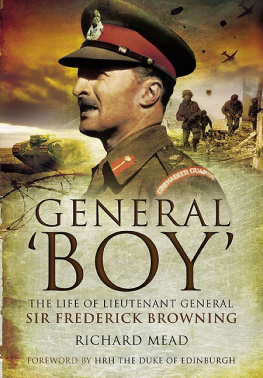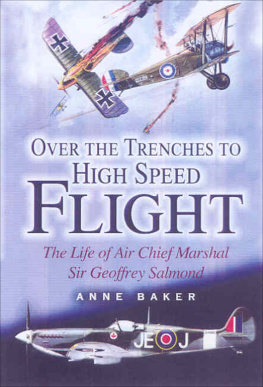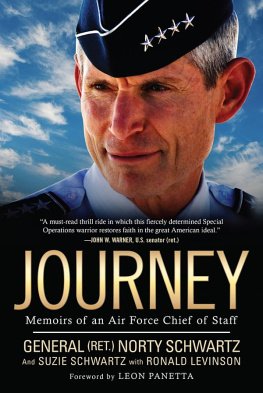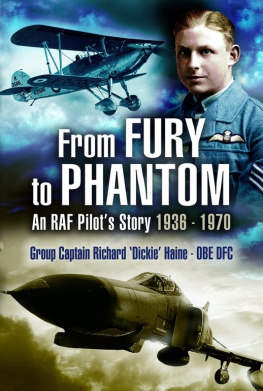Sam
Sam
Marshal of the Royal Air Force the Lord Elworthy KG , GCB , CBE , DSO , LVO , DFC , AFC , MA
A Biography
Richard Mead
Foreword by Marshal of the Royal Air Force the Lord Craig of Radley GCB , OBE
First published in Great Britain in 2018
by Pen & Sword Aviation
An imprint of Pen & Sword Books Limited
47 Church Street
Barnsley
South Yorkshire
S70 2AS
Copyright Richard Mead 2018
ISBN 978 1 52672 717 6
eISBN 978 1 52672 718 3
Mobi ISBN 978 1 52672 719 0
The right of Richard Mead to be identified as Author of this Work has been asserted by him in accordance with the Copyright, Designs and Patents Act 1988.
A CIP catalogue record for this book is available from the British Library.
All rights reserved. No part of this book may be reproduced or transmitted in any form or by any means, electronic or mechanical including photocopying, recording or by any information storage and retrieval system, without permission from the Publisher in writing.
Pen & Sword Books Limited incorporates the imprints of Atlas, Archaeology, Aviation, Discovery, Family History, Fiction, History, Maritime, Military, Military Classics, Politics, Select, Transport, True Crime, Air World, Frontline Publishing, Leo Cooper, Remember When, Seaforth Publishing, The Praetorian Press, Wharncliffe Local History, Wharncliffe Transport, Wharncliffe True Crime and White Owl.
For a complete list of Pen & Sword titles please contact
PEN & SWORD BOOKS LIMITED
47 Church Street, Barnsley, South Yorkshire, S70 2AS, England
E-mail:
Website: www.pen-and-sword.co.uk
Foreword
by Marshal of the Royal Air Force the Lord Craig of Radley GCB, OBE
I t is a privilege to have been invited to introduce this remarkable life story of one of the Royal Air Forces finest and most respected leaders, Marshal of the Royal Air Force the Lord Elworthy, always known as Sam.
After University and having been called to the Bar, Sam spent a couple of years flying part-time with the Royal Auxiliary Air Force before being granted in 1936, at the age of almost twenty-six, the permanent commission which he had long craved. Like many before and after him, Sam joined the newly fledged Royal Air Force for the love of flight, of escape into the third dimension. No one could have foretold then that this was to be the start of a most amazing and meteorically successful service career, taking him on to leading his own service as Chief of the Air Staff, and then to becoming Chief of the Defence Staff in 1967. He crammed into the intervening 30 years of regular service exceptional talent as an aviator, deeds of great courage and gallantry on operations in Bomber Command and the most stressful and demanding challenges of command and operational staff duties throughout the Second World War. By May 1945 when the war in Europe was won he had reached the rank of Air Commodore aged thirty-three. Thereafter his career never really faltered. A natural and revered leader, he went from strength to strength, always standing out head and shoulders above his contemporaries. His impressive list of awards, not least his peerage, and of decorations in both war and peace, bear testimony to the very high opinion in which he was held.
This extensively researched book covers not only all the stages in Sams RAF career but his whole life. Born in New Zealand in 1911, he moved to the United Kingdom in 1924 to attend boarding school at Marlborough and then in 1930 to study Law at Cambridge. After handing over as Chief of the Defence Staff in 1971 and a further seven years of numerous and demanding responsibilities in the UK, he and his beloved wife Audrey decided to settle back in New Zealand, where he died in 1993. The author successfully deals with every period in the long life and times of Sam.
Like many others in the RAF and beyond, I greatly admired Sam. It was my good fortune to be on his personal staff when he became Chief of the Defence Staff. No individual I have known before or after was so charismatic, so greatly admired and yet so disarmingly modest about his own fine personal attributes and achievements.
Introduction
I n the summer of 1945 the strength and reputation of the Royal Air Force stood very high. There could be no doubt in anyones mind about the contribution it had made to the defeat of the Axis powers. The performance of Fighter Command in the Battle of Britain was widely and correctly perceived as having prevented the invasion of the United Kingdom, which would have assured German domination of Europe. The contribution of the RAF to the campaigns in North Africa, Italy, North-West Europe and Burma was immense, whilst Coastal Command, in conjunction with the Royal Navy, had by mid-1943 effectively won the Battle of the Atlantic. The longest campaign of all, lasting from the very beginning to the very end of the war in Europe, had been carried out by Bomber Command, which incurred more casualties, proportionate to its size, than any other British armed formation.
What followed was, unsurprisingly, an anti-climax. An era of peace, albeit interspersed from time to time with military actions on a relatively small scale, has lasted to this day. It was accompanied by different priorities for the British Government, including health, education, trade, industry, social security and the environment, whilst defence assumed a lower level of importance. There was nothing new about this; indeed, arguably it has always been thus in a democracy in peacetime.
For the RAF during the war the primary focus was always on today and tomorrow: activity was dominated by Operations, to which everything else was subordinated. In order to keep ahead of the enemy, development was very rapid, not only in new aircraft but also in the armament and equipment which made them ever more effective fighting machines. Only four years after the last bi-plane fighters had been in action, the first jet fighters entered service. In peacetime, however, the priorities changed. Instead of concentrating on today and tomorrow, the focus was on years, if not decades, ahead. There was less demand for heroes such as Guy Gibson and Douglas Bader and more for men of both vision and application who could look into the future whilst at the same time managing the present.
Happily, there was a deep well of talent on which to draw. The Chiefs of the Air Staff during the late 1940s and the 1950s were men who had held relatively high command during the war, whilst those of the 1960s and 1970s had all served in action but also had long experience of the very different peacetime service. All were distinguished in their way, but none more so than Air Chief Marshal Sir Charles Elworthy, subsequently Marshal of the Royal Air Force the Lord Elworthy, who became not only Chief of the Air Staff, but also Chief of the Defence Staff, at the very top of the British armed services.






![Bar Wing Commander Guy P. Gibson VC DSO - Enemy Coast Ahead [Illustrated Edition]](/uploads/posts/book/180257/thumbs/bar-wing-commander-guy-p-gibson-vc-dso-enemy.jpg)



